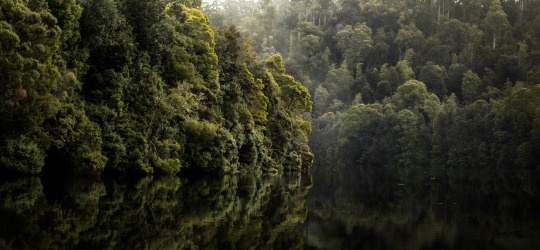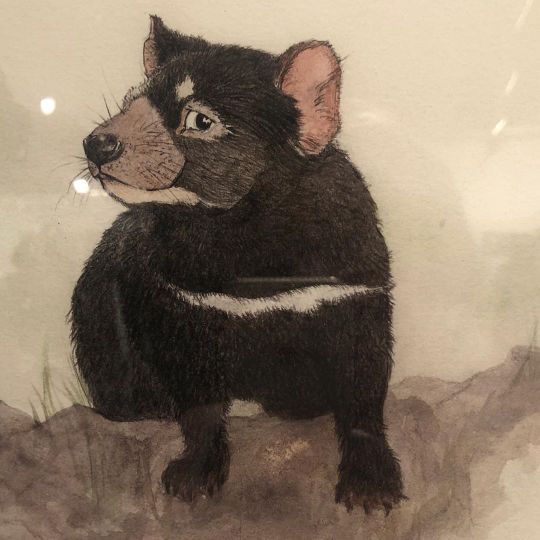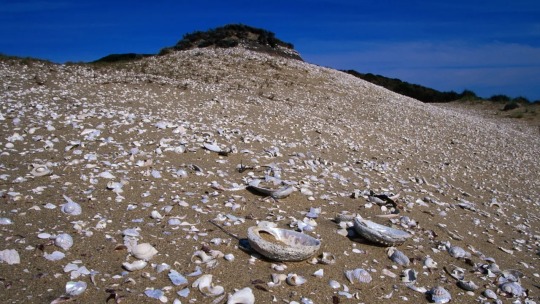#takayna
Text
saw the first few moments of that new abc show savage river, which is supposedly set in savage river, but it looks absolutely nothing like savage river. litcherally unwatchable
#I'm sorry if you're going to film something set here actually film it here at LEAST. or maybe. uh. look at the town you're setting it in#'ooh it's dull and dreary because tasmania' that's what it looks like on the murchison highway but savage river ain't ON the murchison#savage river is in the hills on the edge of takayna#yeah coming along corinna road you're on a ridge#anyway sure the programme'll be great I'm just bugged by the fact that it looks nothing like the place
0 notes
Text

“Confluence”, 2019
kurina/Pieman River, takayna/The Tarkine, Tasmania
13 notes
·
View notes
Photo

Indigo
Forest activist Indigo heads into the Takayna/Tarkine forests on the west coast of Lutruwita/Tasmania, dressed as an endangered wedge-tailed eagle. Over 75 days though the bitter winter of 2021 activists halted development of roads to a proposed mine tailings waste dam. The tailings dam is yet to be built.
Photography by Matthew Newton
0 notes
Photo

Wildlife of takayna gallery
takayna (or Tarkine) in Australia is unique for its wilderness, Aboriginal heritage and abundant wildlife. The area is being impacted by logging, mining, irresponsible recreation and the effects of climate change.
The stunning underside of a minute and delicate white fungi.
© Arwen Dyer
10 notes
·
View notes
Video
youtube
37 minute video, produced by Patagonia, called, “takayna.” Here’s what you’ll see, from Patagonia:
takayna / Tarkine in northwestern Tasmania is home to one of the last tracts of old-growth rainforest in the world, yet it’s also at the mercy of destructive extraction industries, including logging and mining. This documentary unpacks the complexities of modern conservation and challenges us to consider the importance of our last wild places.
3 notes
·
View notes
Video
#takayna #Hypostasis No2 (1min of 12 min) In March this work will be shown at the #UMW #Media Wall, a one-of-a-kind 2 story high exhibition space located in the atrium of the Hurley Convergence Center at the University of Mary Washington in Fredericksburg, VA. *@drbrazil3340 * * * * * #Videoart #Contemporaryart #videoinstagram #art #digitalart #reality #picture #artist #artsy #instaart #beautiful #instagood #gallery #masterpiece #creative #photooftheday #instaartist #artoftheday #love #water #transience #ripples #droplet #arttobuy #artdaily#painting @australian.artists @sawtooth_ari (at Tarkine)
#artoftheday#transience#picture#takayna#creative#digitalart#droplet#painting#umw#hypostasis#instagood#masterpiece#videoinstagram#instaart#videoart#beautiful#contemporaryart#artsy#arttobuy#artist#art#artdaily#gallery#reality#ripples#water#love#photooftheday#instaartist#media
2 notes
·
View notes
Video
youtube
World's largest freshwater crayfish in takayna / Tarkine
The Giant Freshwater Crayfish, Astacopsis gouldi, is the largest freshwater invertebrate. The crayfish lives in a small number of rivers in northern Tasmania, including some of the Tarkine’s rivers. The species and its habitat is threatened by native forest logging. and Bob Brown Foundation is campaigning for protection of the threatened species and habitat. The Tasmanian Aboriginal name for the crayfish is lutaralipina.
In this film, Todd Walsh “The Lobster Man”, a well renowned expert on the Astacopsis gouldi is in the Tarkine and will introduce you to the crayfish.
Produced with Crows Nest Media and Push Start VR, this immersive 360-degree film will transport viewers to a majestic waterway with Astacopsis gouldi.
3 notes
·
View notes
Photo

Thank you to the @bobbrownfoundation for organising the Frontlines Exhibition: takayna to Adani and to @aleta.lederwasch for donating this beautiful little devil which will have a new home with me. If you’re in Hobart do check out the exhibition and better still buy some of the beautiful art to support a wonderful cause. (at The Long Gallery, Salamanca Arts Centre) https://www.instagram.com/p/B8Al2vxBI9G/?igshid=12v1c1qmvkv6x
2 notes
·
View notes
Photo

最近気になるのが「(トレイル)ランニング」と「社会貢献」や「自然保護」のマッシュアップ。 パタゴニア製作のフィルム「takayna」ではタスマニアの自生林の保全活動を支えるランナーを、パタゴニアとアンバサダー石川弘樹氏からは南三陸イヌワシ火防線プロジェクトの活動を知ることができた。 こういった取り組みや活動をもっと知りたい。そして、いつの日か継続的に関わってみたい。 #trailrunning #トレラン #patagonia #パタゴニア #takayna #南三陸イヌワシ火防線プロジェクト (パタゴニア 東京・渋谷)
0 notes
Text
The Rebirth of Tasmanian Indigenous Culture

— By Andrew Bain | 25th October 2021
Although many people believe that this ancient culture and people were lost, recent years have seen a seismic shift in recognition for indigenous Tasmanians.
Among the sand dunes that line Tasmania's north-east coast, a campfire burns. Carleeta Thomas stands beside the fire, tending the muttonbird that cooks in the flames, surrounded by a series of wooden sleeping pods dotted through the scrub.
The oily muttonbird, or short-tailed shearwater, has been a traditional palawa (Tasmanian Aboriginal) food for as long as anyone knows, and these sleeping pods have been designed to replicate palawa huts found on Tasmania's west coast.
Today, they're an immersive piece of the wukalina Walk, a guided hike along the larapuna/Bay of Fires coast that is the first tourism business owned and operated by the palawa community. They're an expression of an ancient culture and people that even someone as young as 21-year-old Thomas, wukalina Walk's head guide, has often been told was dead.
"When I went to high school, there were still people that were saying 'I swear Truganini was the last Tasmanian Aboriginal'," she said. "I didn't really know how to respond to that. I knew I was Aboriginal."
The myth that Bruny Island woman Truganini was the last Aboriginal Tasmanian has persisted since her death in 1876, less than 80 years after Tasmania was settled by Europeans. In those early decades, palawa suffered a series of atrocities, from being forced into missions by the state's so-called Chief Protector of Aborginals, George Augustus Robinson, to be "civilised and Christianised", to the Black Line of 1830, when settlers formed a moving human chain across the island to try to capture the remaining Aboriginal population. The settlers were outsmarted: only two palawa were reported as captured.
The treatment of the palawa has been described as a genocide, though the lineage survived, with some palawa women taken to Bass Strait islands off the north coast of Tasmania by British and American sealers.

The wukalina Walk is a guided hike along the Bay of Fires coast that introduces palawa culture to travellers (Credit: Andrew Bain)
In the 2016 Australian census, more than 23,000 Tasmanians identified as Aboriginal, representing 4.6% of the population – higher than the national rate, where 3.3% of Australians identified as Aboriginal.
For palawa, there has been a seismic shift in recognition in recent years, with a new embrace of indigenous culture across Tasmania. In 2014, the state began a process of bestowing dual names – English and palawa kani – on places, so that the likes of Mount Wellington, which looms over Hobart, became kunanyi/Mt Wellington; and the Tarkine rainforest in Tasmania's north-west became takayna/Tarkine. With 15 new Aboriginal or dual names approved at the start of this year, there are now 28 altered place names across the state.
The wukalina Walk began in 2018, bringing palawa culture, country, stories and bush tucker to travellers. Tasmanian Aboriginal Studies is now taught in schools, and palawa arts such as shell stringing, weaving and kelp basket-making have come to the fore.
For palawa, there has been a seismic shift in recognition in recent years, with a new embrace of indigenous culture across Tasmania
In April 2021, palawa artist Caleb Nichols-Mansell opened the doors of Blackspace Creative, an art gallery in the city of Burnie on Tasmania's north-west coast, now representing 19 palawa artists.
"I say that we're the first dedicated palawa arts and cultural hub," said Nichols-Mansell, who believes the re-emergence of palawa culture to be part of a recent recognition – spurred in a large part by the Black Lives Matter movement – of the state's brutal history.
"I think we've reached a point that we have to acknowledge the history," he added. "We can't move forward any further without acknowledging what happened in the past. I think the reason we've seen such an interest in arts and culture is because that's the easiest angle to approach these things from when we want to talk about truth-telling and reconciliation and acknowledgement of the past. It's easier to do that through artistic and cultural expressions than to approach the monster head-on. I feel like it was a natural progression."
Sheldon Thomas is one palawa artist who's seen the cultural tide turn. In 2007, he was one of four people plucked from an arts course by the Tasmanian Museum and Art Gallery (TMAG) to make the first traditional palawa canoe in almost 170 years.

Larapuna / Eddystone Point marks the northernmost tip of the Bay of Fires region (Credit: Andrew Bain)
Using scans of five small 1840s canoes in the museum's collection, they puzzled together the methods for building a canoe using bark from the native stringybark tree. Their 5.35m-long canoe remains on display in TMAG, and Thomas has gone on to build canoes for the likes of the Maritime Museum of Tasmania, the biannual Wooden Boat Festival and a national-park installation in remote Southwest National Park. He's currently making a canoe for the Australian National Maritime Museum in Sydney.
One of Thomas' canoes has been paddled from Bruny Island to the Tasmanian mainland, and he plans to make a three-day journey from Bruny Island to Hobart in one of the canoes in 2023.
He describes the canoe-making as a revival of one of the world's oldest traditions, a practice going back at least 40,000 years, and something that rescued him from a life of alcohol and obliteration.
“I wouldn't be standing here, I wouldn't be the person I am today [without it]," he said. "I'm so grateful."
Thomas, who has also revived the painstaking practice of making rope from stringybark (a 20m-length of rope can take four months to make), says the driver for much of the new and visible cultural expression across Tasmania is legacy: the desire to hand down traditions that came so close to being lost.
"I think people in the community are standing up and seeing the big picture for their kids," he said. "What are we going to do for them? I saw my kids and I thought, 'I need to do things for my kids, too.' That's why I want to do the canoes properly.
"I'm also going to teach kids because I'm getting a bit older. I'm going to get about half a dozen kids in the community and teach them how to do it properly."
Teaching has been one of the most significant changes in Tasmania's relationship with its indigenous past. In 2018, Tasmanian Aboriginal Studies was added to the senior secondary school curriculum. Palawa woman Sandra Guerzoni had been advocating for the teaching of local indigenous history and culture in schools since working as a senior curriculum officer in Aboriginal education in the 1990s. Today, she teaches Tasmanian Aboriginal Studies at Hobart's Guilford Young College.

Shell middens are testament to the millennia of continuous occupation by palawa (Credit: Oliver Strewe/Getty Images)
"The thing that's really hard to get across when you're in schools is that this is a living culture," Guerzoni said. "There's contemporary Aboriginal culture – it didn't just die.
"I think kids need to see both sides of the story. It's not about taking land back, it's about delivering a course for the right reasons and looking to unpack what really happened and the repercussions."
It was a change that came too late for the schooling of Carleeta Thomas, but her learning journey goes on. When she started guiding with wukalina Walk in 2018, she knew little about her own culture, despite growing up on Cape Barren Island, where the one township is an Aboriginal community.
In working for wukalina Walk, she says she's rediscovered her connection to the old ways, country and culture. She's sat with the Aunties – the female palawa elders – learning the intricate art of shell stringing, and grown from a shy island child to a confident woman who can express and share her people's living stories to those who want to walk and learn.
I guess our spirit in lutruwita has obviously died a little bit because there haven't been constant practices of our culture
"By bringing guests out on country and showing them how much we've been able to keep intact and changing people's views and perceptions of our community, that's one of the most amazing things for me," she said.
"I guess our spirit in lutruwita (Tasmania) has obviously died a little bit because there haven't been constant practices of our culture. And that's heart breaking to me. To be a young community member, to know a little bit of what I know, and to be able to share that with people, that's an amazing feeling."
0 notes
Text
god i love takayna will all my soul
i know nothing of this man yet i would die for him
1 note
·
View note
Text
recently I’ve had. a bit of trouble actually being Inspired and creating new things but on the way home I came up with an idea so
#it's one I might even distribute physically#I do feel I need to y'know. create more poster-like art to put on redbubble or some shit#anyway I like the idea. it's about. actually y'know what just look up takayna
1 note
·
View note
Text
Petitions
Peter Dutton: Please don't tear my family apart - Sign the Petition! https://chn.ge/2IyVeUl via @ChangeAUS
Mental health services: Help my dying son - Sign the Petition! https://chn.ge/2N5Q9Gy via @ChangeAUS
Daniel Andrews: Protect sacred Djapwurrung birthing trees from expansion of the Western Hwy by Vicroads. - Sign the Petition! https://chn.ge/2MxTL38 via @ChangeAUS
Jacinda Ardern: “Hear our voice” - We need safer staffing and working conditions for New Zealand Nurses. - Sign the Petition! https://chn.ge/2KwXygo via @ChangeAUS
Peter Dutton: Please don't tear my family apart - Sign the Petition! https://chn.ge/2tzP8P5 via @ChangeAUS
David Littleproud : Ban Live Exports from Australia - Sign the Petition! https://chn.ge/2N8MhVp via @ChangeAUS
Josh Frydenberg : DO NOT bulldoze 2000ha native forest near Great Barrier Reef - Sign the Petition! https://chn.ge/2N3RVrX via @ChangeAUS
Xi Jinping: End to the Yulin Dog Meat Festival. #StopYulin - Sign the Petition! https://chn.ge/2tEDqmh via @ChangeAUS
Premier Berejiklian : Stop NSW Government WASTING $2B Rebuilding SFS & Olympic Stadiums - Sign the Petition! https://chn.ge/2tDDH8W via @ChangeAUS
Premier Will Hodgman : Support World Heritage protection for takayna / Tarkine - Sign the Petition! https://chn.ge/2N74rHf via @ChangeAUS
Dr David Clark: Pharmac funding for Palbociclib (Ibrance) for Stage VI breast cancer. - Sign the Petition! https://chn.ge/2IyV7YV via @ChangeAUS
New Zealand Government: Remove industrial Hemp from the Misuse of drugs act MoDA 1977 - Sign the Petition! https://chn.ge/2IByoM6 via @ChangeAUS
Prime Minister of Australia We Need government Rebates for life-saving diabetes equipment - This petition is supported by Diabetes Australia - Sign the Petition! https://chn.ge/2IyVfYp via @ChangeAUS
Daniel Andrews: Protect sacred Djapwurrung birthing trees from expansion of the Western Hwy by Vic... https://www.change.org/p/daniel-andrews-protect-sacred-djapwurrung-birthing-trees-from-expansion-of-the-western-hwy-by-vicroads?recruiter=30135381&utm_campaign=signature_receipt&utm_medium=twitter&utm_source=share_petition via @ChangeAUS
Petition to fly the Aboriginal Flag atop of the Sydney Harbour Bridge permanently - Sign the Petition! https://chn.ge/2KA2660 via @ChangeAUS
Sunshine Coast Regional Council: Council & State Government Urban Footprint is wiping out Sunshine Coast Kangaroos! - Sign the Petition! https://chn.ge/2KutQIS via @ChangeAUS
BAN PUPPY FARMS IN AUSTRALIA - Sign the Petition! https://chn.ge/2IByAei via @ChangeAUS
Peter Dutton: Bring Priya Back to Biloela - Sign the Petition! https://chn.ge/2Kv9BuO via @ChangeAUS
Help us make it easier for Cancer Patients to access benefits from Centrelink. - Sign the Petition! https://chn.ge/2tKC9KD via @ChangeAUS
Don’t leave my baby without a mum - please fund this surgery! - Sign the Petition! https://chn.ge/2NaraSv via @ChangeAUS
#Petition#Petitions#boost#boosting#signal boost#signal boosting#action#activism#environmental protection#environmental protection#environmental damage#environmental destruction#environmental destruction#environmentalism#environmental protection agency#environmental science#environmentally#environmental#medical rights#patient rights#human rights#child rights#child protection#child safety#child welfare#patient welfare#mental health
1 note
·
View note
Video
youtube
The fight for an ancient rainforest and the future of our last wild places
takayna / Tarkine in northwestern Tasmania is home to one of the last undisturbed tracts of Gondwanan rainforest in the world, and one of the highest concentrations of Aboriginal archaeology in the hemisphere. Yet this place, which remains largely as it was when dinosaurs roamed the planet, is currently at the mercy of destructive extraction industries, including logging and mining. Weaving together the conflicting narratives of activists, locals and Aboriginal communities, and told through the experiences of a trail running doctor and a relentless environmentalist, this documentary, presented by Patagonia Films, unpacks the complexities of modern conservation and challenges us to consider the importance of our last truly wild places.
0 notes
Photo

Wildlife of takayna gallery
takayna (or Tarkine) in Australia is unique for its wilderness, Aboriginal heritage and abundant wildlife. The area is being impacted by logging, mining, irresponsible recreation and the effects of climate change.
Billardiera longiflora.
© Arwen Dyer
#arwen dyer#photographer#takayna#tarkine#australia#aboriginal heritage#billardiera longiflora#plant#nature#flower photography
13 notes
·
View notes
Text
0 notes